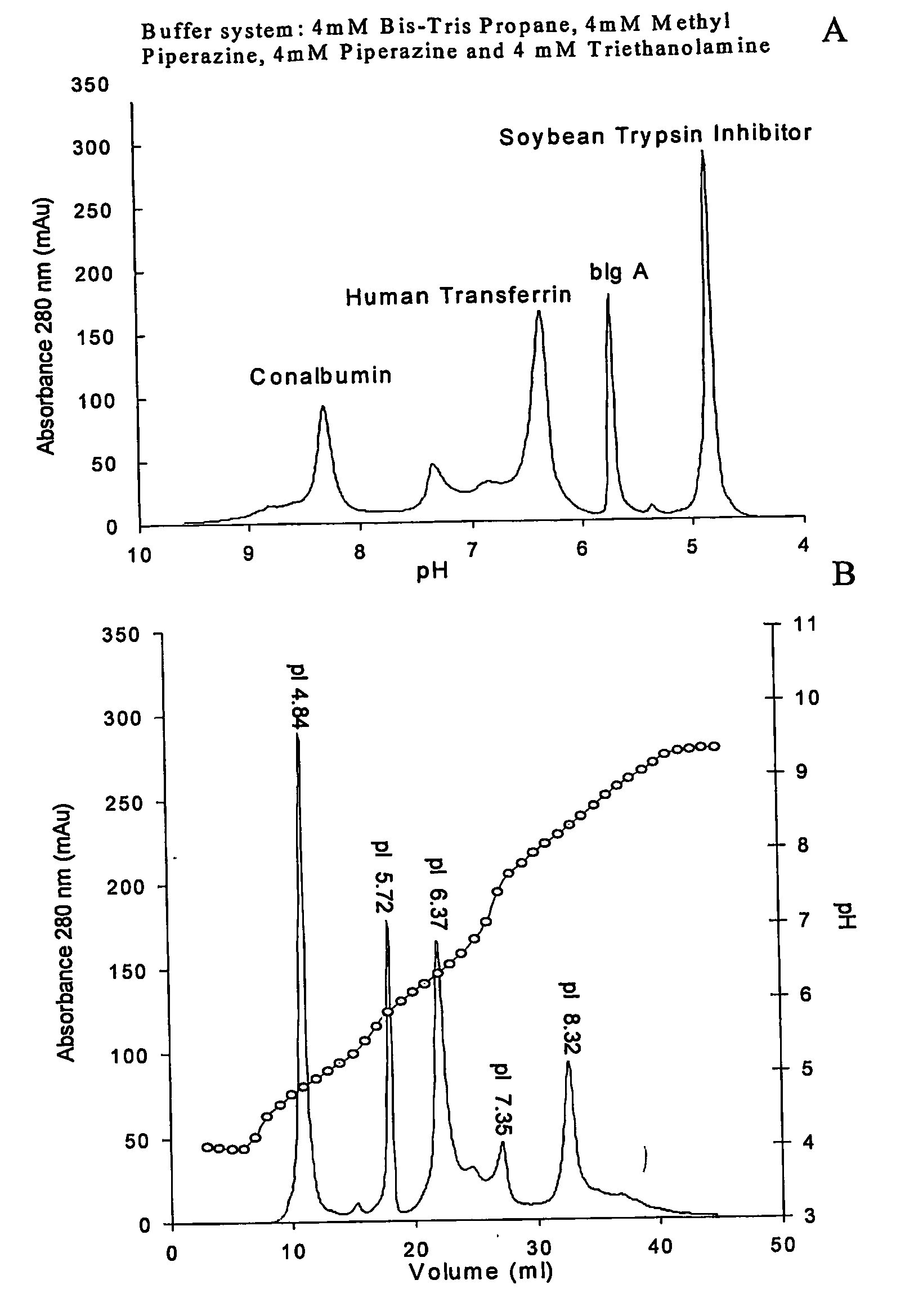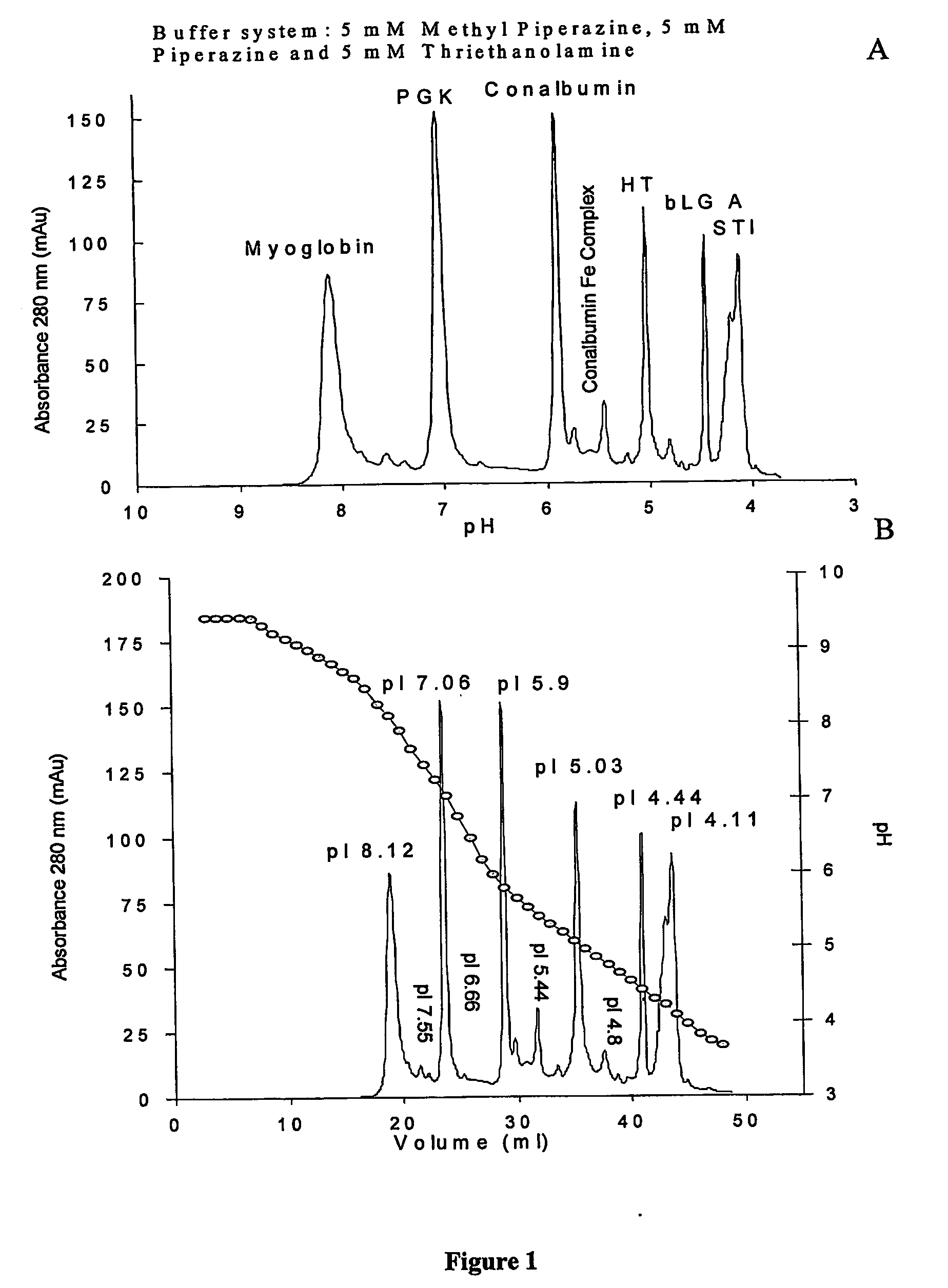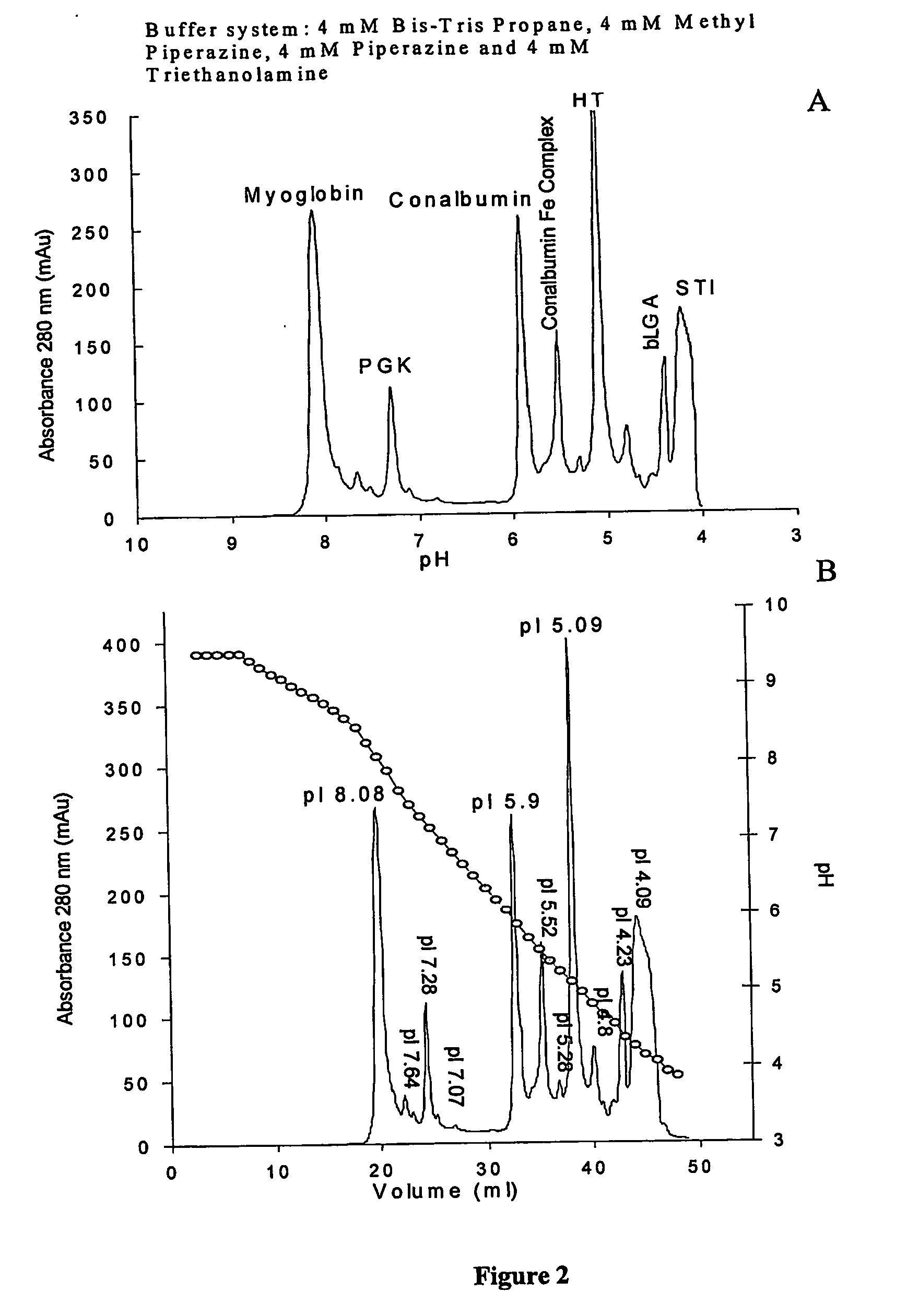External gradient chromatofocusing
a gradient chromatography and gradient chromatography technology, applied in the field of external gradient chromatography, can solve the problems of reducing the efficiency of chromatography, and limiting the application of potentially extraordinarily valuable fast purification techniques to laboratory purification techniques that find little practical application in bulk industrial applications, so as to achieve the effect of minimizing the error ra
- Summary
- Abstract
- Description
- Claims
- Application Information
AI Technical Summary
Benefits of technology
Problems solved by technology
Method used
Image
Examples
example 1
[0333] External gradient chromatofocusing separation of a complex mixture of proteins on a strong anion exchanger Mono Q HR 5 / 5 at room temperature. Starting buffer A-5 mM Methyl piperazine, 5 mM piperazine, 5 mM TE pH 9.5, final buffer B-5 mM Methyl piperazine, 5 mM piperazine, 5 mM TE pH 3.5. Flow rate 1 ml / min, length of linear gradient formation from 0% B to 100% B 40 column volumes. The three component buffer system used to form the external gradient in this example exhibits a pH profile with moderate non-linearity (FIG. 1, panel B, dotted line). Despite the complexity of the sample, the closeness in pI's for several species and the wide pH range necessary to separate all components an excellent resolution is achieved (FIG. 1, panels A and B).
example 2
[0334] A protein mixture with the same composition as in Example 1 separated by external gradient chromatofocusing on a strong anion exchanger Mono Q HR 5 / 5 at room temperature using the invention's four component buffer system. Starting buffer A-4 mM Tris-Bis Propane, 4 mM Methyl piperazine, 4 mM piperazine, 4 mM TE pH 9.5, final buffer B-4 mM Tris-Bis Propane, 4 mM Methyl piperazine, 4 mM piperazine, 4 mM TE pH 3.5. Flow rate 1 ml / min, length of linear gradient formation from 0% B to 100% B 40 column volumes. The improvement in separation is not significant but the addition of Bis-Tris Propane to the gradient forming solutions (A and B) makes the pH profile much more linear (FIG. 2, panel B. dotted line). FIG. 2, panel A shows the UV absorbance of the separated protein species vs. pH.
example 3
[0335] Comparison of separations of two variants of yeast phosphoglycerate kinase 0.2 mg by internal retained pH gradient chromatofocusing and external pH gradient chromatofocusing on weak and strong anionic exchanger. Panel A Chromatofocusing with Polybuffers and Mono P HR 5 / 20 column offered by Pharmacia Amersham Biotech Equilibration buffer A-25 mM TE iminodiacetic acid pH 8.3 elution buffer B-6 ml Polybuffer 96+14 ml Polybuffer 74, iminodiacetic acid pH 5 diluted to 200 ml. An internal retained pH gradient was generated and the protein was eluted with 12 column volumes of Polybuffer at 1 ml / min flow rate. FIG. 3 Panel B.
[0336] PGK separation achieved by hybrid (external plus retained internal gradient) chromatofocusing on a weak anionic exchanger Mono P HR 5 / 20 and a simple two component buffer system without using Polybuffers. Linear external elution gradient was generated in 18 column volumes using starting buffer A-5 mM piperazine, 5 mM TE pH 8.2 and final buffer B-5 mM pipe...
PUM
| Property | Measurement | Unit |
|---|---|---|
| Molar density | aaaaa | aaaaa |
| Molar density | aaaaa | aaaaa |
| Concentration | aaaaa | aaaaa |
Abstract
Description
Claims
Application Information
 Login to View More
Login to View More - R&D
- Intellectual Property
- Life Sciences
- Materials
- Tech Scout
- Unparalleled Data Quality
- Higher Quality Content
- 60% Fewer Hallucinations
Browse by: Latest US Patents, China's latest patents, Technical Efficacy Thesaurus, Application Domain, Technology Topic, Popular Technical Reports.
© 2025 PatSnap. All rights reserved.Legal|Privacy policy|Modern Slavery Act Transparency Statement|Sitemap|About US| Contact US: help@patsnap.com



